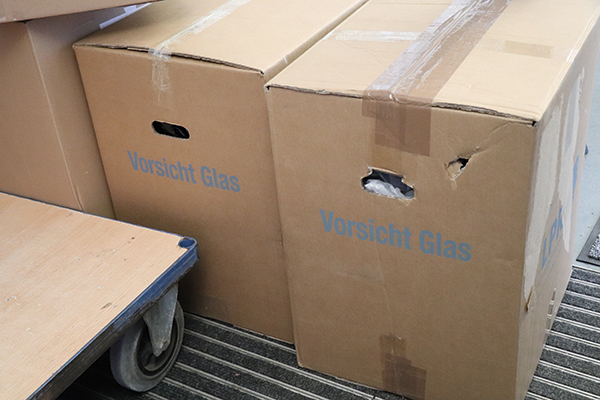Baden-Württemberg has tightened its corona regulations. Starting on Monday, January 25th, fabric masks and scarfs don’t count as enough protection in certain places. There, surgical masks or even more efficient masks have to be worn. These are called FFP2 or KN95. The stricter mask regulations apply on public transports (trains, busses, cabs, airplanes), on train and bus platforms as well as in the waiting areas of train stations and airports. These masks also have to be worn in shops and in the workplace, starting Monday. Children under the age of 14 can continue to wear so-called community masks. There continues to be no mask requirement for children under the age of six.
tünews informs here about the different types and the performance characteristics of face masks.
FFP-masks (Filtering Face Pieces)
These masks fit tightly and reliably protect the wearer from viruses. These protective masks filter even the smallest particles and aerosols out of the air. It is available in different versions. Masks with an exhalation valve offer a higher wearing-comfort. However, they only filter the inhaled air and don’t protect other people. Protective masks without the exhalation valve filter the inhaled air and additionally stop the wearer from contaminating their surrounding air with exhaled droplets.
FFP-masks are available in different levels of efficiency: (FFP1 80 % protection), (FFP2 95 %) and (FFP3 99,95%).
Protective masks are usually round or oval. They are constructed in a way, so they fit tightly over the face. Elastic or fixed straps ensure this. FFP-masks are part of the personal protective gear, according to the occupational safety, and are supposed to protect the wearer from particles, aerosols and droplets. To sell these particle-filtering masks in Europe legally, they have to undergo evaluation procedures and are labeled with the CE-sign by the manufacturer afterwards.
Surgical mask (also: medical mask or OP-mask)
Surgical masks are loose fitted, disposable face masks, which cover the nose, mouth and chin. They are usually worn to protect the wearer from splashes or droplets with bigger particles. They also prevent the wearer from spreading potentially infectious respiratory secretions to others.
Surgical masks vary in their design. Mostly, the mask is flat and rectangular with folds or wrinkles. The upper part of the mask has a solid strip, which can be adjusted to the nose. Elastic or long fixed straps ensure that the surgical mask sits correctly. The straps can either be looped behind the ears or get knotted together behind the head.
Self-made fabric masks (community masks)
Their quality is, for example, dependable on the used fabric, the number of layers and if it correctly covers nose and mouth. It prevents the wearer from contaminating the surrounding area with exhaled droplets. However, the masks does not offer a sufficient protection against aerosols.
Sources:
www.bundesgesundheitsministerium.de
www.baua.de (Federal Institute for Occupational Safety and Health)
https://sichereswissen.info/
tun21020206
Impressionen zum Leben in Zeiten der Corona-Pandemie: Foto: tünews INTERNATIONAL; Ute Kaiser, 13.05.2020



